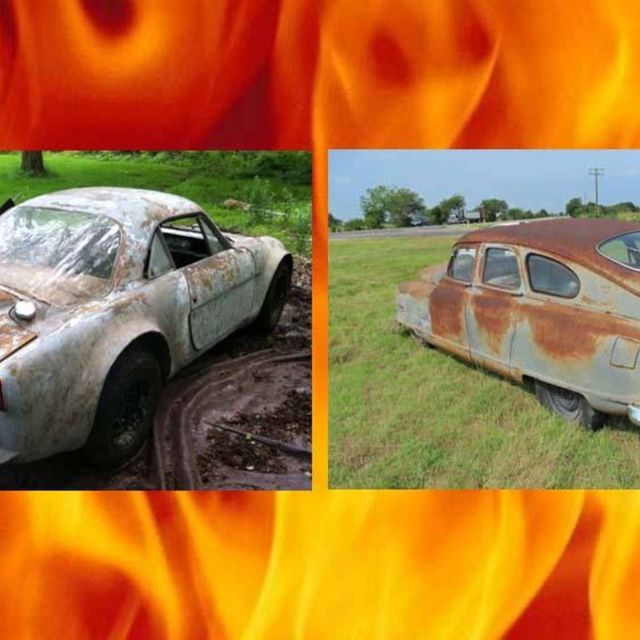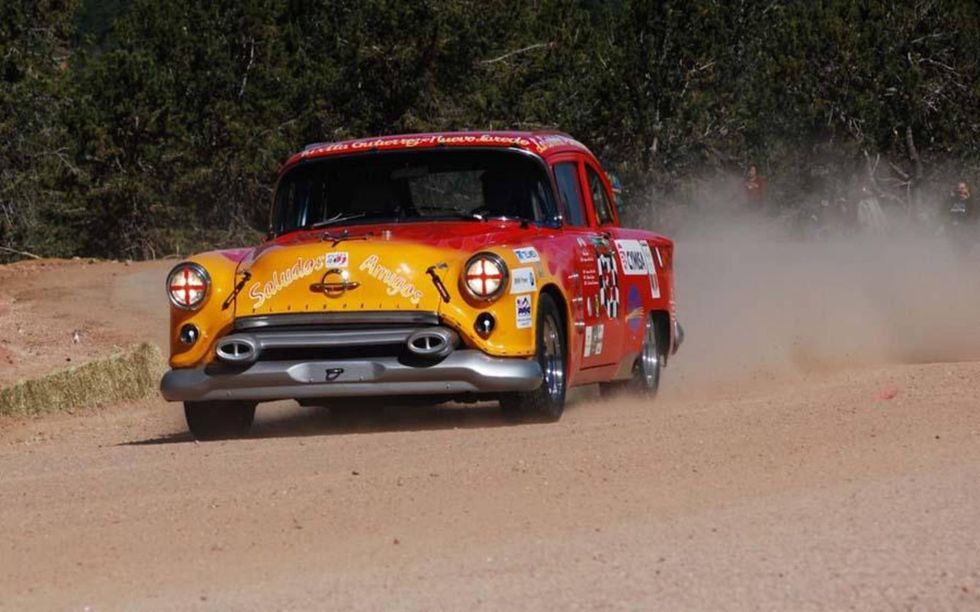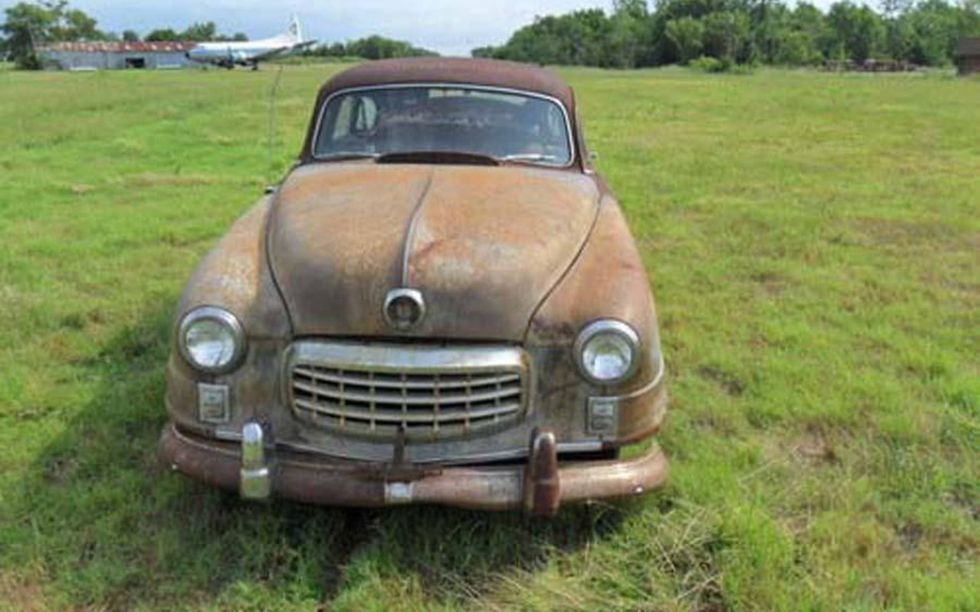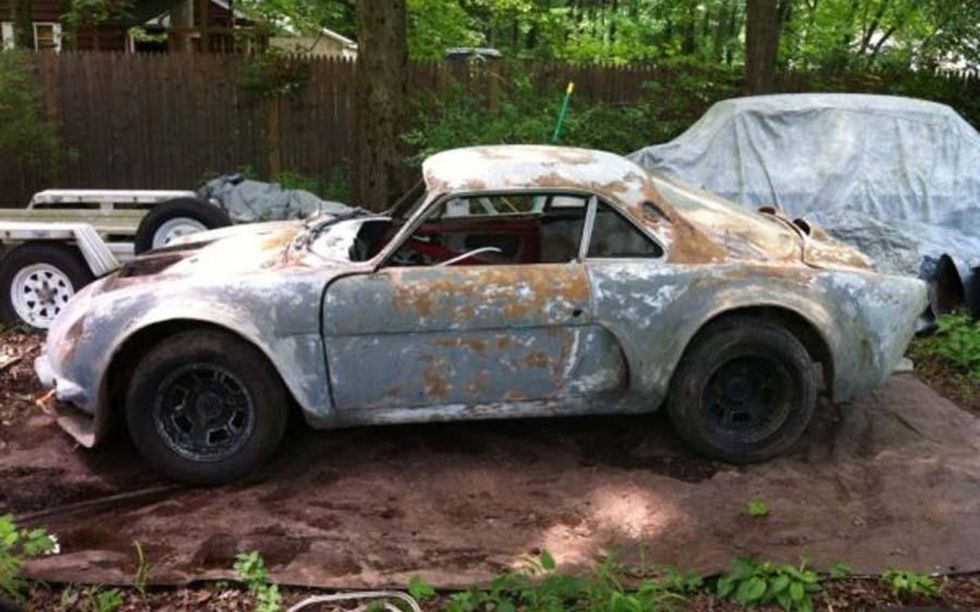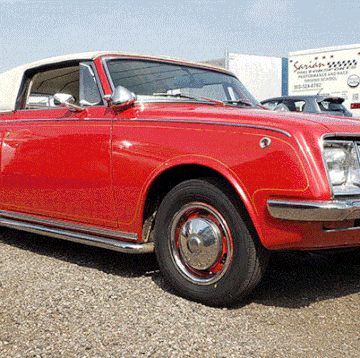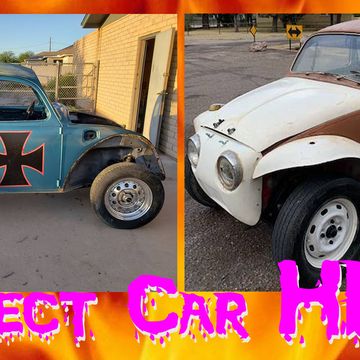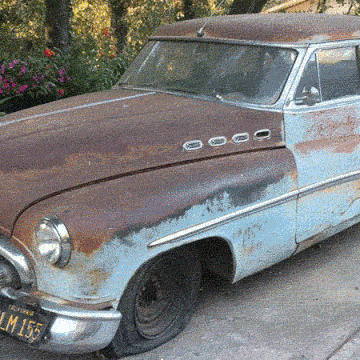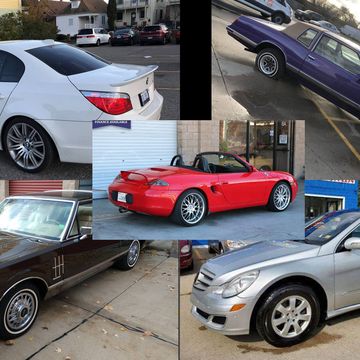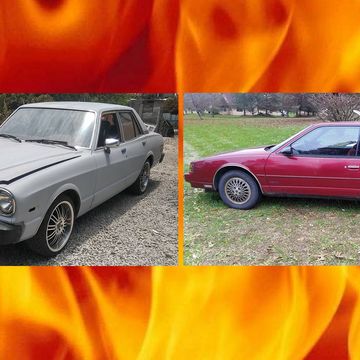Last week, the Hell Garage offered eternal torment with a pair of screamin', low-production-numbers Quad 4-powered General Motors machines, and nobody can tell us that those cars don't offer the ideal combination of coolness and glaring flaws that make for fine Hell Projects.
However, the Hell Garage Demons are so excited by the news that the 2012 Pikes Peak International Hill Climb has been rescheduled (after terrible Colorado wildfires caused the initial race date to be cancelled) that they've decided to force the next round of PCH penitents to build them a hillclimb car for the Pikes Peak International Hillclimb Vintage Automobile Division class. This class seemed overwhelmed by endless 1960s Ford Mustangs last year, and where's the hell there? So, we've picked a couple of uncommon vintage cars with genuine racing heritage from back in the day--and genuine rust from back in the day.
Doug Mockett's 1954 Oldsmobile seems equally at home on the mountain as it does in the Carrera Panamericana, and you'd think the sheer apocalyptic presence of this mighty Olds would have inspired dozens of Pikes Peak racers to stuff their Mustangs in the crusher and start building great big Carrera-correct Detroit machines.
Other than an equally amazing 1949 Cadillac, such was not the case at the 2011 race. So, we're dragging open the fiery Neptunium-237 gates to the Hell Garage and making room for an American machine from the late 1940s through 1954 model years, a type of car that competed in the original Carrera. And, really, what better choice could there be than the car that NASCAR legend (and outcast) Curtis Turner drove in the very first Carrera Panamericana? That's right, a 1950 Nash Ambassador!
If we were toiling in the Somewhat Difficult Garage here, we'd have found you a solid, running 1950 Ambassador that just needs a cage plus some suspension and engine upgrades to be ready for high-altitude racing. But this here is not that kind of garage. No, we're going to limit your starting budget to Nissan Sentra territory (your project budget will, of course, be much larger) and then send you to what appears to be an abandoned airport in Texas, where you'll find this very reasonably priced 1950 Nash Ambassador. Just look at that fine slab of Wisconsin iron oxide steel!
This proto-AMC comes with an overhead-valve six (which is how we know it's an Ambassador and not a rabble-grade, flathead-motivated Statesman) and a minimalist description that gets the Hell Garage Demon Stamp of Approval for its lack of useful information: "I have for sale a 1950 nash car, I don t know anything about this car except it would be a neat car to restore. The pic i have taken can answer your question.."
Are we looking at cancerous rust or just surface oxidation caused by decades the Texas sun blasting the paint? You'll need to visit Brookston, Texas, to find out for sure! You won't need to worry about the drivetrain, because you'll need to upgrade to an engine that can make real power where oxygen is hard to come by, plus a transmission and rear end that can handle said power.
The Pikes Peak organizers want vintage cars to stay within the marque when it comes to engine swaps, which means you won't be installing any GM LS or blown Ford Modular 5.4 goodies under your Ambassador's hood. Nash-Kelvinator merged with Hudson to create American Motors in 1954, which means that AMC engines are definitely fair game for this project. Chrysler consumed AMC in 1987, which makes the Hemi 392 a sort of great-great-great-great-great step-nephew of the Nash 235-cube OHV six, but that's just too tenuous (and too easy) a link for our engine-swap candidate.
Nope, instead of buying a nice 21st-century crate motor from your friendly Chrysler dealer, you'll need to build up a turbocharged AMC 401-cubic-inch V8 engine that makes at least 500 reliable horses. How much will that cost? How many zeroes can you write on a check? How about the suspension? So many questions, so many dollars!
Perhaps you prefer your vintage hillclimb machine to be something made over in Europe. Excellent choice--the ratio of available-to-unobtainium components drops dramatically when you decide to race a half-century-old European sports car. What'll it be? Perhaps a Big Healey, or maybe a Porsche 356? An Alfa Romeo Giulietta? Not so fast--the Hell Garage Demons have vetoed those expensive-but-feasible ideas in favor of something French . . . or maybe French-Brazilian.
The Alpine A108 was a masterpiece of lightweight automotive design that used a rear-mounted Renault Ventoux engine to make the car a temperamental, spinout-prone death trap howling performance machine that humiliated its Teutonic rivals.
Better still, the A108 was license-built by Willys-Overland do Brasil (the same company that manufactured the Willys Aero until the early 1970s) and sold as the Willys Interlagos. Be it an Alpine or a Willys, fixer-upper A108s are just about impossible to come by these days, which is why the Hell Garage Demons are so excited about finding this 1963 "Renault Alpine A108 Willys Interlagos" in New Jersey. At first glance, this car may appear utterly horrifying somewhat challenging--and we're sure it gets even scarier when you look more closely.
How bad is the rust? It appears that anything not made of fiberglass or rubber is made of the joyful union of iron and oxygen. The car hails from the oxide-o-riffic state of Hawaii, where (the seller claims) Henry J. Kaiser once owned it. The engine is seized. "Some trim pieces are missing." The seller makes no mention of bags of radioactive medical waste and pure dioxin in the trunk, but we wouldn't be surprised to find those as well. But just imagine this car passing the tree line at speed, with the twin-turbocharged PRV V6 out of an A610 providing power!
